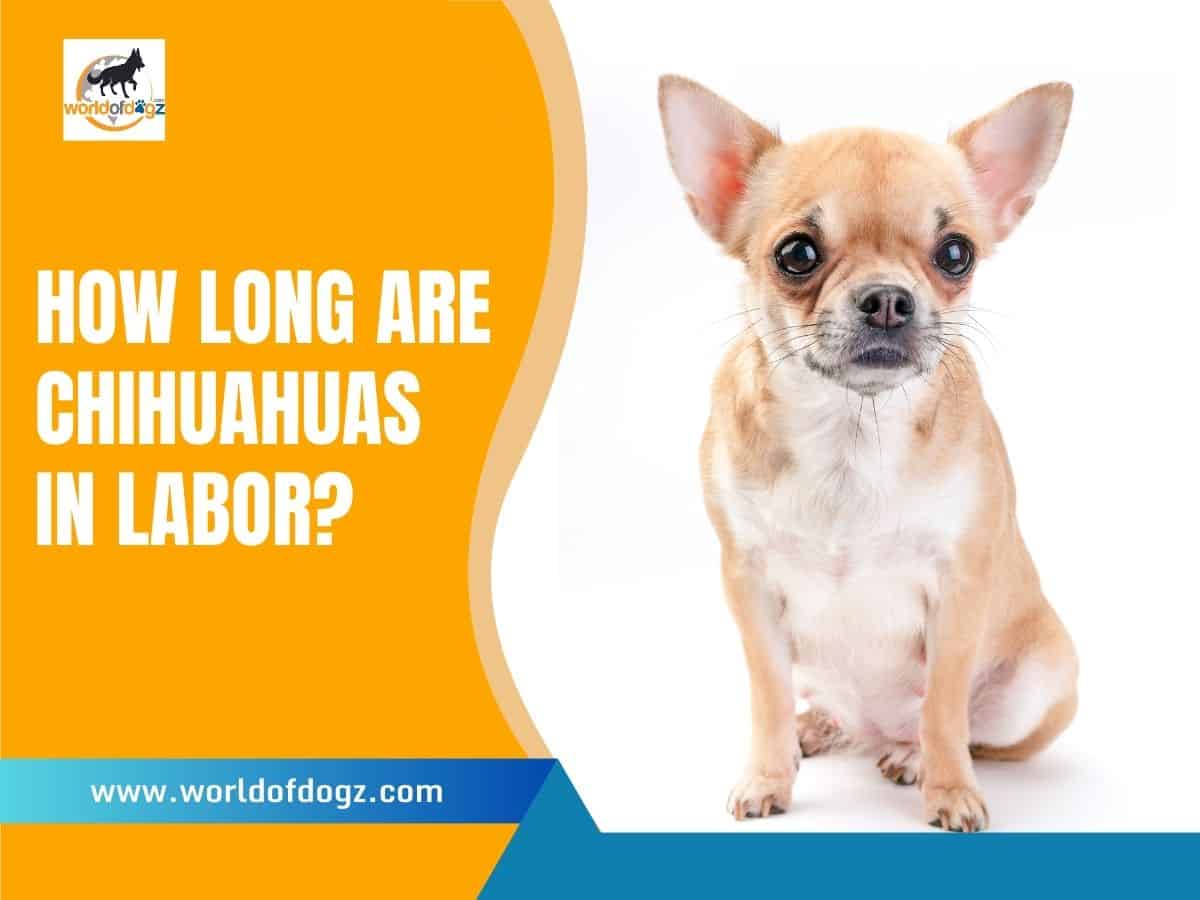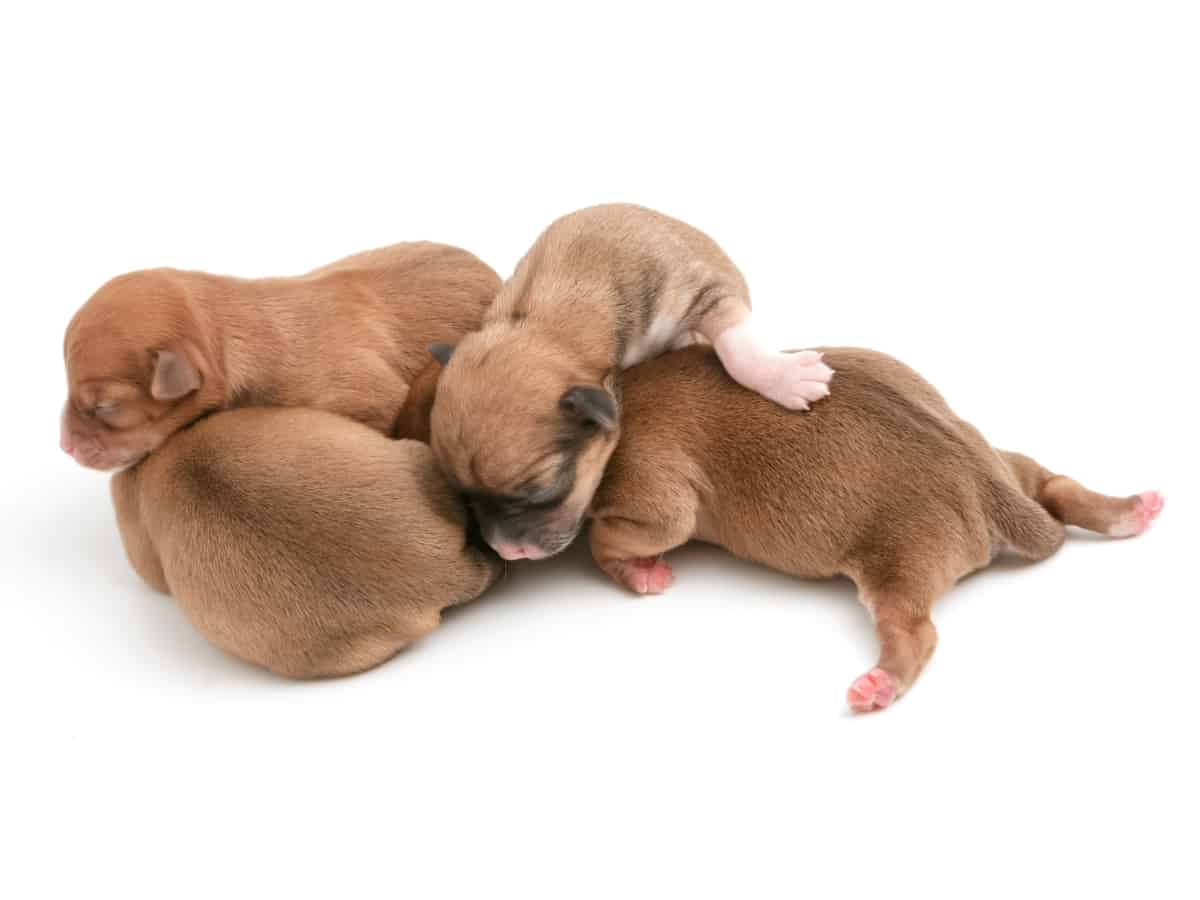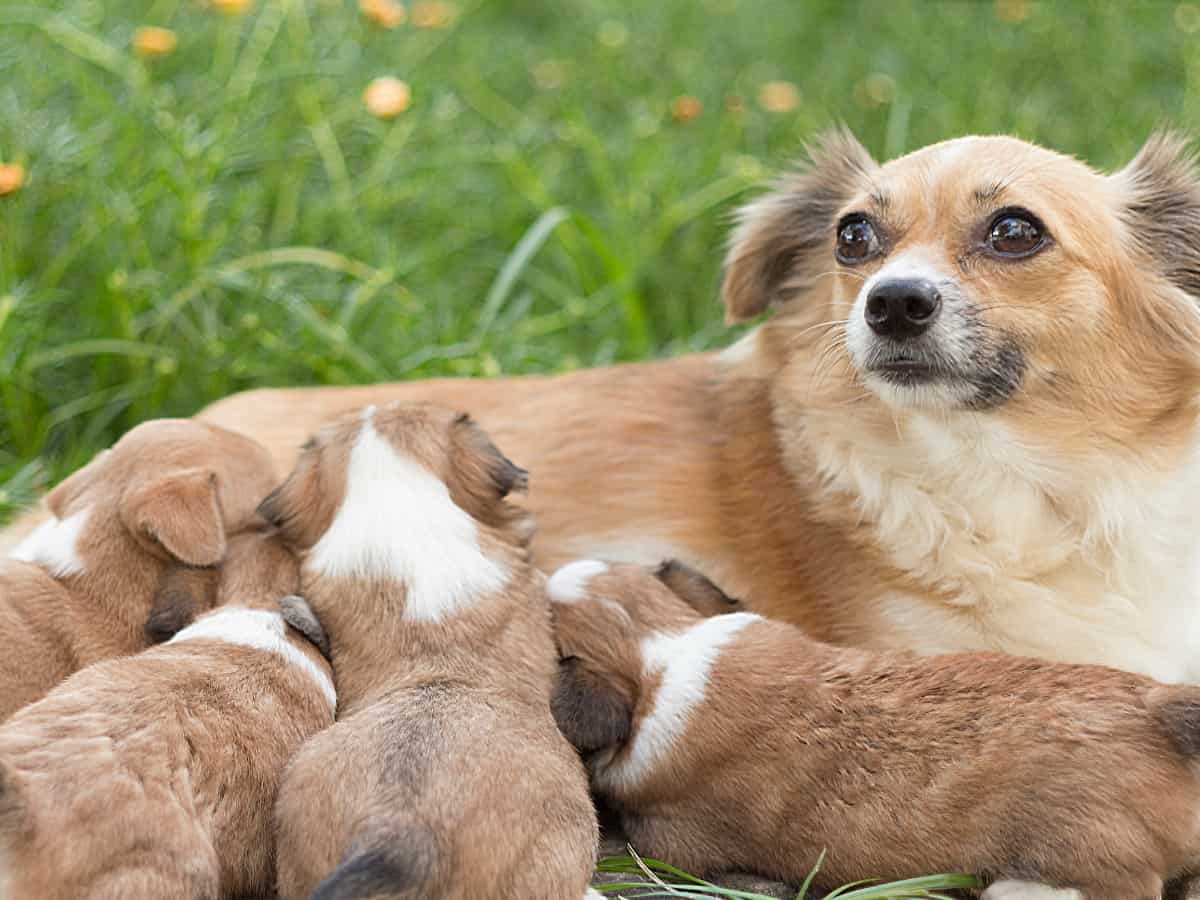Chihuahuas are popular small dogs with a loyal and affectionate nature. As someone who has closely watched and raised Chihuahuas, I firmly believe their labor phase is critical and demands the utmost attention.
So, what should you prepare for the process? One of the initial points is to be aware of is the duration of labor. Knowing how long your Chihuahua will be in labor helps you better prepare for the arrival of her puppies.
A Chihuahua can be in labor up to 12 hours prior to pushing. Once the cervix is dilated, labor usually lasts from three to 12 hours, depending on the size of the litter. Puppies are generally born every 30-60 minutes, with 10-15 minutes of straining. Around 15 minutes after each birth, the placenta is expelled.
Even after knowing that Chihuahuas have a specific labor time, you should have a better understanding. After discussing with pet parents, I found they’ve certain common questions, which I’ve collated and detailed in this article. You’ll learn:
- Chihuahua conception and pregnancy
- The three stages of labor
- Helping your Chihuahua through labor
- Potential complications to be aware of
Let’s get started!

Chihuahua Conception and Pregnancy
During your Chihuahua’s pregnancy, you need to know the various stages associated with ensuring proper care for your dog.
Conception typically occurs after mating, and Chihuahuas have a gestation period of around 57-72 days. It is accepted that the average is around 65 days +/− 2 d, as shown in this study of canine parturition prediction.
The exact gestation period is difficult to predict as sperm can survive in the female reproductive tract for 6 days. Additionally, predicting the day of conception can also be difficult, as several studies have shown that there is little correlation between the start of the heat cycle (estrus) and the time of ovulation.
A veterinarian can pinpoint a highly precise due date within a three-day window by figuring out the day of ovulation. For example, this study of pregnant Chihuahuas used fetal measurements obtained by ultrasound to estimate the gestational age in dogs.
You should note that your Chihuahua may not show any external signs in the early stages of pregnancy. However, you might notice hormonal changes, such as increased appetite and slight weight gain.
You must provide your pregnant Chihuahua with proper nutrition, including high-quality dog food and prenatal supplements if needed. A good diet also prevents them from becoming picky eating dogs.

In my friend’s Chihuahua case, she consulted a vet weekly to ensure everything was right. In fact, this helped her be strong and aware of her health condition. I strongly feel that the awareness of a pet parent is the key.
As your Chihuahua progresses through her pregnancy, you’ll start to notice physical changes, such as an enlarged abdomen and darkened nipples. Around the 30th day of gestation, you can schedule an ultrasound to confirm pregnancy and see how many puppies to expect.
Observing your girl’s behavior is another way to determine which stage your Chihuahua is in during pregnancy. For example, during the later stages of gestation, your Chihuahua may show the following signs:
- Nesting behavior: She might start to search for a secluded spot to give birth.
- Restlessness: She may become more agitated or anxious.
- Temperature drop: Her body temperature may drop around 24-48 hours before labor.
When your Chihuahua reaches the final stage of pregnancy, you should have a safe and comfortable area set up for her to give birth. This can be a whelping box or another secluded, cozy spot.
Here’s a video explaining the different stages of a Chihuahua’s pregnancy. The owner also shares the progress week by week:
Chihuahua Labor and Delivery Process
Like other dogs, Chihuahuas go through a labor and delivery process consisting of several stages.
First Stage of Labor
The first stage of dog labor consists of contractions and cervical dilation. During this time, your Chihuahua’s cervix softens and opens, preparing for the puppies to pass through the birth canal.
You may notice her becoming restless, pacing, or panting. This stage typically lasts between 6 and 12 hours but can vary among individual dogs.
During this stage, you can also observe unique patterns in body temperature and progesterone levels. Veterian Key has shared patterns in the form of a graph:

Second Stage of Labor
Once your Chihuahua’s cervix is fully dilated, she enters the second stage of labor – the actual delivery of her puppies. You may observe visible contractions and her straining as she pushes the puppies out.
Each puppy should be born within an hour of strong contractions, but it’s not uncommon for smaller breeds like Chihuahuas to take a bit longer.
“Allow for 30 minutes to 2 hours between the birth of Chihuahua puppies.”
Natural labor is the safest option, but you should be prepared to assist if necessary.
While your Chihuahua is giving birth, you can help in the following ways:
- Ensure she’s comfortable and has a clean, quiet space to deliver her puppies. Also, ensure that she’s located at the ideal room temperature.
- Stand by if she needs assistance, such as breaking the amniotic sac or clearing fluid from a puppy’s nose and mouth. Animal Referral and Emergency Centre mentions this stage as critical, and your Chihuahua can experience high strain levels.
- Keep track of the time between puppies – consult your veterinarian if it’s longer than two hours.

Third Stage of Labor
Finally, the third stage of labor involves the delivery of the placenta after each puppy. Each newborn’s placenta usually passes out within 15 minutes of each puppy being delivered.
Ensure your Chihuahua expels one placenta for every puppy she delivers, as retained placentas can cause serious health issues.
Potential Complications in Chihuahua Labor
When preparing your Chihuahua for pregnancy, you should find out if she has any ongoing complications. For example, a research study reported that an existing condition like a diaphragmatic hernia could complicate the labor process.
Large Heads and Birth Canal Size
Chihuahuas often have larger heads than their body size, which can result in difficulties during labor. Due to the small size of their birth canals, it may be challenging for puppies to pass through.
You should monitor your Chihuahua’s labor closely and look for signs of stress, such as excessive panting or straining without any progress.
C-Section
Sometimes, Chihuahuas may require a C-section to deliver their puppies safely. This is usually the case if labor isn’t progressing due to the large heads or birth canal size.
If you’re aware that your Chihuahua is pregnant, consult with your veterinarian beforehand to discuss the potential need for a C-section and signs to watch for during labor.
When to Contact a Veterinarian
Knowing when you should contact a veterinarian for assistance during your Chihuahua’s labor is essential. If you notice any of the following, it’s time to get professional help:
- Labor has been ongoing for more than 24 hours.
- Your Chihuahua has been actively pushing for more than one hour without delivering a puppy.
- More than two hours have passed since the last puppy was born, and you believe there are more puppies to come.
- Your Chihuahua appears to be in severe pain or distress.
And remember, keeping your Chihuahua in a calm, supportive environment can also help ensure a smoother labor process.
Understanding Chihuahua Litter Size
Regarding Chihuahua litters, remember that the average litter size can range from one to six puppies. However, there are cases of Chihuahuas having even larger litters, although this is rare.
While your Chihuahua’s litter size can vary, understanding some factors contributing to the size can help you determine how many puppies your Chihuahua might have.
Genetics, age, whether the first pregnancy, and even the size of the Chihuahua itself can all affect the litter size. Larger Chihuahuas might have larger litters, while smaller ones might have smaller ones. As your Chihuahua gets older, the size of their litter may decrease.
Perhaps, each Chihuahua is unique, and their litter sizes can vary significantly from the average.

Helping Your Chihuahua Through Labor
We play vital roles in managing and ensuring our little Chihuahua goes through labor without pain and danger. So, what’s the first step?
Educating yourself on the signs of labor, what to expect, and how to ease your Chihuahua into labor can significantly impact the experience for you and your furry friend.
Recognizing the Signs
Keep an eye out for the signs that your Chihuahua is going into labor, such as restlessness, panting, and nesting behavior. Once you notice these signs, formulate an action plan to avoid last-minute surprises.
Dos and Don’ts During Labor
To give a clear picture, here’s a table of dos and don’ts during your Chihuahua’s labor:
| Dos | Don’ts |
|---|---|
| Remain calm and supportive | Panic or get stressed, as your Chihuahua can sense it |
| Monitor the labor progress | Disturb or disrupt the labor process unnecessarily |
| Keep delivery area warm and comfortable | Leave your Chihuahua alone for extended periods |
| Assist with removing the pups’ membranes, if needed | Overcrowd the delivery area with family and friends |
| Have a veterinarian’s contact information on hand | Be afraid to ask for professional help if needed |
Assisting During Labor
Though most Chihuahuas can handle the labor process independently, there may be times when you need to step in to help. In such cases, gently remove the pup’s membrane if your Chihuahua cannot do so. It’s crucial to clear the membrane from the puppy’s nose and mouth to prevent suffocation.
Sometimes newborn Chihuahuas have built-up mucus around their nose, which causes breathing difficulties. The dam will do its best to lick it away, but if you see one of the tiny newborns still struggling to take breaths, you must have a baby nose suction bulb ready to go.
Swaddle the puppy gently, carefully suck the mucus out with the bulb, and then hold the pup while gently rubbing its chest.
You should know when to intervene and when to let nature take its course. If your Chihuahua is struggling, don’t hesitate to contact your veterinarian for guidance.
Remember, your role as a pet parent during your Chihuahua’s labor is to provide support, comfort, and assistance when necessary. Familiarize yourself with the labor process, and always prioritize the safety and well-being of your Chihuahua and her puppies.
Final Thoughts
When considering the question of how long are Chihuahuas in labor, it’s normal to feel anxious as your Chihuahua goes through this life-changing experience. Remember to stay calm and supportive, as your pet depends on you for reassurance.
While it’s not yet another process for your Chihuahua, it can be a memorable one if you take all precautions in the first place. A happy delivery does mean the active engagement of a well-aware and caring pet parent. Be one for your Chihuahua!
Related Posts You May Like:





